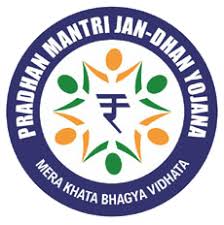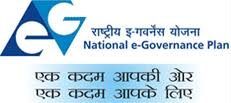In this post, notes of Unit 5 (Good Governance Initiatives in India: Best Practices) from DSC – 1 (Governance Issues and chalenges) are given which is helpful for the students doing graduation this year.
Best Practices in Good Governance Initiatives in India
India has started different good governance programs to make things clearer, more responsible, efficient, and to involve citizens more. Here are some key examples:

- RTI Act (Right to Information Act, 2005):
– Purpose: Lets citizens ask for information from government offices, making them more open and responsible.
– Best Practice: Gives people the right to access government information, encouraging honesty and lowering corruption.
- Digital India:
– Purpose: To make India a digital society and knowledge-based economy.
– Best Practice: Focuses on creating digital tools, teaching digital skills, and providing government services online, making them easier to access.
- e-Governance Initiatives:
– Purpose: To improve how services are delivered, cut down on red tape, and boost efficiency.
– Best Practices: Tools like Digital Locker, e-Post, and e-Sign allow safe online storage of documents, electronic messaging, and digital signatures.

- Pradhan Mantri Jan Dhan Yojana (PMJDY):
– Purpose: To include everyone in the banking system.
– Best Practice: Makes it easy for families to access banking services, like opening a bank account, getting insurance, and having a debit card.
- Goods and Services Tax (GST):
– Purpose: To create one tax system instead of many different ones.
– Best Practice: Simplifies the tax system, reduces corruption, and encourages a unified market.
- Swachh Bharat Mission:
– Goal: Keep things clean, improve sanitation, and stop open defecation.
– Good Method: Builds toilets, teaches about hygiene, and raises awareness.
- Direct Benefit Transfer (DBT):
– Goal: Send subsidies and benefits directly to people’s bank accounts.
– Good Method: Cuts down on waste and corruption, and makes sure benefits go to the right people.
- National e-Governance Plan (NeGP):
– Goal: Make government services better using technology.
– Good Method: Works to make services more efficient, clear, and accessible.

- Aadhaar (Unique Identification):
– Goal: Give each person in India a unique ID.
– Good Method: Helps deliver services better, includes people financially, and verifies identities.
- Swachh Survekshan:
– Goal: Check and rank cities on how clean they are.
– Good Method: Creates friendly competition among cities, gets citizens involved, and promotes cleanliness.
- National Rural Employment Guarantee Act (NREGA):
– Goal: Ensure jobs in rural areas and improve living conditions.
– Good Method: Offers a safety net by guaranteeing 100 days of wage work for each rural household.
- PM Kisan Yojana:
– Goal: Help small farmers with money.
– Good Method: Sends financial support directly to farmers’ bank accounts on time.
These programs help good governance by being open, reducing corruption, improving service, and getting citizens involved. Their success depends on ongoing work, regular checks, and adapting to new challenges.
Public service delivery
Public service delivery is how governments provide services to people and businesses. Good public service delivery is important for good governance and helps meet the needs of the community. Here are the main points about public service delivery:
- Types of Public Services:
– Basic Services: These include education, healthcare, water, sanitation, and safety.
– Infrastructure Services: These involve transportation, utilities, and other important structures.
– Administrative Services: These include government tasks like issuing licenses and permits.
- Principles of Public Service Delivery:
– Accessibility: Services should be easy for all people to reach, no matter their wealth or where they live.
– Equity: Public services should be shared fairly, so everyone can get important services.
– Quality: Services should meet good standards and work well.
– Transparency: Information about services, who can use them, and how to access them should be clear and easy to understand.
– Accountability: Government and service providers should take responsibility for what they do and have ways to handle complaints.
– Citizen-Centric Approach: Public services should focus on what citizens need and want, aiming to improve everyone’s quality of life.
- Ways to Provide Services:
– In-Person Services: Services offered in person at places like government offices, clinics, and schools.
– Online Services: Using the internet to provide services through websites and apps, making it easier for people to access them.
– Mobile Services: Services given through mobile apps or text messages, especially in areas where many people have mobile phones.
– Outsourcing: Some governments hire private companies or non-profits to provide certain services to work better.
- Service Standards and Charters:
– Service Standards: Specific goals for providing services quickly and effectively.
– Service Charters: Documents that explain the rights and duties of both service providers and users, along with expected service standards.
- Citizen Feedback and Grievance Redressal:
– Feedback Mechanisms: Ways for people to share their thoughts on service quality and how happy they are.
– Grievance Redressal: Steps to handle complaints, making sure there is responsibility and ongoing improvement.
- Digital Transformation:
– E-Government Services: Using technology to provide services online, making things faster and easier.
– Data Analytics: Looking at data to find patterns, check how services are working, and make better decisions based on that information.
- Public-Private Partnerships (PPPs):
– Working Together: The government and private companies’ team up to improve services, especially where private companies can add new ideas and work better.
- Monitoring and Evaluation:
– Performance Measures: Setting important goals to check how well services are being delivered.
– Checks and Reviews: Regular evaluations and checks to make sure standards are met and to find ways to do better.
- Capacity Building:
– Training: Helping government workers and service providers learn new skills and knowledge.
– Innovation: Supporting new ideas for providing services to meet changing needs and new technology.
Good public service is important for the happiness and well-being of people. Governments are always working to make their services better to meet the changing needs of the community and to improve how they are run.

Electronic Governance
Electronic Governance, or e-Governance, is using technology to make government services better and easier. It aims to make government work faster, clearer, and easier for everyone to use. Here are some main points about e-Governance:
1. Goals of e-Governance:
– Efficiency: Use technology to speed up government tasks and cut down on paperwork.
– Transparency: Make government information easy for people to find.
– Accessibility: Make sure everyone can use government services, no matter where they live.
– Citizen Engagement: Help people take part in government decisions.
– Innovation: Encourage new ideas in how services are provided and managed through technology.
2. Parts of e-Governance:
– Online Service Delivery: Giving government services through websites, so people can use them from anywhere.
– Digital Infrastructure: Building the needed technology, like networks and data centers, to help e-Governance work.
– Mobile Applications: Providing government services through mobile apps for people to use on their phones.
– Data Management: Keeping government data safe, secure, and easy to access.
– ICT in Administration: Using technology for government tasks, like managing employees, finances, and purchasing.
3. Key Features and Best Practices:
– Interoperability: Making sure different government systems can work together and share information easily for better service.
– Standardization: Using the same formats and rules to make things easier and compatible.
– Security Measures: Putting strong security in place to protect sensitive information and stop unauthorized access.
– User-Friendly Interfaces: Creating easy-to-use interfaces for people to access and use government services.
– Multi-Channel Service Delivery: Offering services in different ways, like online, through mobile apps, and at service centers, to meet different user needs.
4. Examples of e-Governance Initiatives:
– Digital India: This is a major program in India that aims to make the country more digital and smarter. It includes projects like Aadhaar, e-Sign, and MyGov.
– e-Government in Singapore: Singapore has many online government services, like One Service for citizen feedback, eCitizen for online services, and using data to help make laws.
– Estonia’s e-Governance Model: Estonia has a well-developed online government system, including e-Residency, which gives digital IDs to people around the world, and the X-Road platform for safe data sharing.
5. Challenges and Things to Think About:
– Digital Divide: Making sure that e-Governance programs do not increase the gap between those who have and do not have access to digital services, so all citizens can use them equally.
– Data Privacy: Dealing with worries about the safety and privacy of people’s data online.
– Capacity Building: Offering training for government workers and citizens to help them use and benefit from e-Governance programs.
6. Global Views:
– United Nations E-Government Survey: The United Nations often does surveys to check how e-Government is developing around the world. These surveys show trends, good practices, and problems.
E-Governance is changing, and it works best when we think about technology, laws, security, and the participation of citizens. It can greatly change how governments work and communicate with people, making governance more responsive and efficient.

Citizens Charter & Right to Information:
Citizens Charter:
A Citizens’ Charter is a document made by the government or an organization that explains what services they promise to provide to the public. It helps make the government clearer, responsible, and efficient. Here are the main points about Citizens Charters:
- Objectives:
– Service Commitments: Clearly states what services government agencies or organizations will provide to citizens.
– Transparency: Makes government activities clearer by describing the standards and quality of services.
– Accountability: Ensures government agencies are responsible for providing services and explains how to address complaints.
- Key Parts:
– Service Standards: Sets the quality and time limits for government services.
– Grievance Redressal Mechanisms: Explains how people can complain and seek help for bad services.
– Citizen’s Rights and Responsibilities: Details what citizens can expect and what they need to do when using public services.
– Feedback and Evaluation: Creates ways for citizens to give their opinions to help improve services.
- Implementation:
– Training and Capacity Building: Makes sure government workers are well-trained to meet the service standards in the Citizens’ Charter.
– Regular Review and Update: Regularly checks and updates the Citizens’ Charter to keep up with changes in policies, standards, or what citizens need.
- Examples:
– Indian Railways Citizens’ Charter: Lists the promises of Indian Railways to passengers, including ticketing, cleanliness, safety, and being on time.
– Philippine Passport Citizens’ Charter: Gives details on how to apply for a passport, how long it takes, and what to expect from the service.
Right to Information (RTI):
The Right to Information is a basic right that lets people access information from government bodies. It helps make the government more open and responsible. Here are the main points about the Right to Information:
- Goals:
– Transparency: Makes government actions clear by allowing people to get information.
– Accountability: Makes sure public officials are responsible for their actions by letting people check what the government does.
– Empowerment: Gives people the tools to take part in democracy.
- Key Parts:
– Right to Access Information: Lets people ask for and receive information from government bodies.
– Exceptions: Lists certain types of information that may not be shared, like national security or personal privacy.
– Appeal Process: Allows people to appeal if their request for information is denied.
- How It Works:
– Information Commission: Sets up a group to make sure the RTI Act is followed, handle appeals, and solve problems.
– Proactive Disclosure: Requires government bodies to share some information without needing a specific request.
- Examples:
– India’s Right to Information Act, 2005: Lets people ask for information from government bodies and sets up commissions to oversee the Act.
– United States Freedom of Information Act (FOIA): Lets people request information from federal agencies, with some exceptions.
The Citizens’ Charter and Right to Information work together to empower people and improve the relationship between the government and the public by promoting openness and responsibility.

Corporate Social Responsibility (CSR)
Corporate Social Responsibility (CSR) is when companies take extra steps to help society, the environment, and the economy, beyond just making money. Here are the main points about CSR:
1. Goals of CSR:
– Help communities and society.
– Protect the environment and promote sustainable practices.
– Follow ethical business standards.
– Build good relationships with customers, employees, and local communities.
2. Areas of Focus:
– Community Development: Support education, healthcare, help reduce poverty, and improve community facilities.
– Environmental Sustainability: Use eco-friendly practices and help with conservation.
– Employee Welfare: Treat workers fairly and help them grow professionally.
– Philanthropy: Donate to charities and support social projects.
– Ethical Practices: Ensure fair treatment in the supply chain and responsible sourcing.
3. CSR Activities:
– Community Programs: Volunteer work and skills training.
– Education Support: Help with scholarships and skill-building projects.
– Healthcare Support: Fund clinics and vaccination efforts.
– Environmental Efforts: Reduce waste and support renewable energy.
– Charitable Donations: Give money to NGOs and social groups.
4. Reporting CSR:
– CSR Policies: Companies often have rules about their CSR commitments.
– Annual Reports: Companies share their CSR efforts and impacts each year.
– Global Reporting Initiative (GRI): Some follow GRI standards for reporting.
5. Legal CSR Requirements:
– Some countries require companies to spend a set number of profits on CSR.
– Boards of directors may oversee CSR efforts.
6. Challenges:
– Greenwashing: Some companies may pretend to be responsible to look good.
– No Standard Measures: There are no common ways to measure CSR efforts.
– Balancing Profit and Responsibility: Finding a balance between making money and helping society.
7. Global Standards:
– United Nations Global Compact: Encourages responsible and sustainable business policies.
– ISO 26000: Offers guidance on social responsibility.
8. Examples of CSR:
– Unilever’s Sustainable Living Plan: Focuses on sustainable sourcing and social well-being.
– Microsoft Philanthropies: Provides technology access to underserved communities.
CSR is becoming more important in business, and companies that include CSR in their plans often gain a better reputation, customer loyalty, and trust from stakeholders. As people expect companies to act responsibly, CSR will likely continue to play a big role in how businesses operate.


